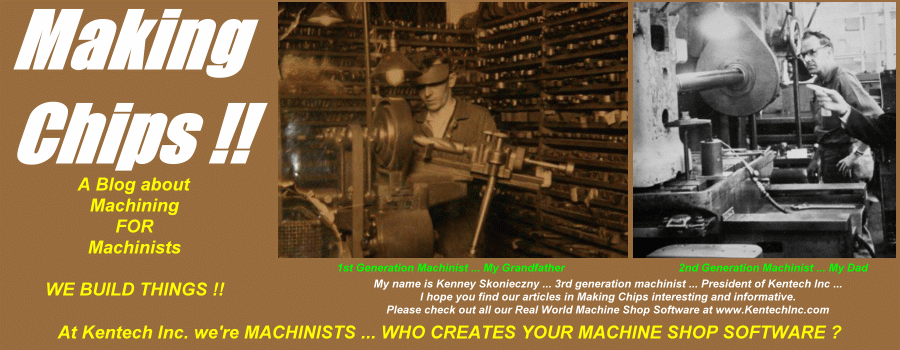One of my personal best purchases was in converting our CNC lathe tool turret from standard lathe tooling to the Sandvik CAPTO system. I can compare this transformation to the points I outlined in Part #1 of this Shop Efficiency series ... click here to read that article ... and the transformation that takes place when you bring your VMC table into the 21st century. A CAPTO system will bring your CNC lathe turret into the 21st century.
First - What is CAPTO?
 The CAPTO system is basically a quick-change, modular tooling system for CNC lathes and turning centers. Instead of mounting tooling directly into the turret ... tools are mounted to quick-change clamping units that are mounted onto the turret. Tools are then easily interchanged by simply changing the "head" mounted onto the clamping unit. Need to change from an 80 degree turning tool to a 55 degree ... just simple swap the "head". Need to change from a .750 insert drill to a 1.250 ... simply change the "head". For live tool turning centers ... need to change from a 1" drill to a face mill ... simply change the "head".
The CAPTO system is basically a quick-change, modular tooling system for CNC lathes and turning centers. Instead of mounting tooling directly into the turret ... tools are mounted to quick-change clamping units that are mounted onto the turret. Tools are then easily interchanged by simply changing the "head" mounted onto the clamping unit. Need to change from an 80 degree turning tool to a 55 degree ... just simple swap the "head". Need to change from a .750 insert drill to a 1.250 ... simply change the "head". For live tool turning centers ... need to change from a 1" drill to a face mill ... simply change the "head".Second - Why Use CAPTO?
This type of modular tooling system comes with tons of advantages. Here are just a few of the more important ones pertaining to the Shop Efficiency factors which are the main focus of this series.
- Quick tool change which keeps the spindle running and the machine making chips / money. Not only in changing the complete tool type ... but insert changes can take place off-line while the head is replaced at the turret involving less time than an insert change.
- Greatly reduced set-up and changeover times because of the cutting edge repeatability when re-mounted in the clamping unit.
- Greater tool stability leads to improved cutting and cycletimes.
- Greater flexibility in tool selection and tool type.
- Same tooling can be used throughout the shop ... reduced tooling costs and inventory.
- Greater options for through-tool coolant delivery ... again, improved cutting and cycletimes.
- Turning Centers with Live Tools can see the biggest impact. By simply swapping heads that tool station can go from a face mill to a drill to an end mill in seconds. With greater repeatability meaning less set-up / touch off times. In addition ... turning that face mill station into a turning tool station can also be accomplished ... quickly and easily.
Third - Cost vs Features
Like anything in life ... the system does require an initial investment. How much can be spread out over time as you integrate the system into the machine and the shop over time. I will say from
experience that the long term savings are there ... in quicker change overs, increased cycletimes and reduced tooling inventory ... especially if you integrate the system into multiple machines. The beauty part here is that once you have the clamping units on all your machines ... all machine will now utilize the same tooling. That is a huge advantage including reduced tooling costs and inventory all around.
RESULT - Increased Shop Efficiency
As you can see from the points outlined here ... there are a ton of features that can lead your CNC turning department to increased shop floor efficiency with the transformation through a CAPTO system. By integrating the system into your shop bit by bit you can defer the initial investment a bit and still reap the long term advantages and savings as you build the system into your shop floor. From faster insert changes ... to faster tool change-overs ... to faster set-up ... to improved cutting and cycletimes ... your shop floor can certainly reap improved shop efficiency with a CAPTO system.
LINKS for ADDITIONAL INFORMATION
- For a more in-depth look ... take a peek at the Sandvik Coromant video by CLICKING HERE.
- For more information on CAPTO in general ... download the informational PDF by CLICKING HERE
Please come back for our next installment in our series on Shop Efficiency.
Until next time ... Happy Chip Making !!
At Kentech Inc. we are MACHINISTS who create Real World Machine Shop Software.
Who creates the machine shop software guiding your shop's future ??
Check out all our REAL WORLD CNC & MACHINE SHOP titles at
Check out all our REAL WORLD CNC & MACHINE SHOP titles at





